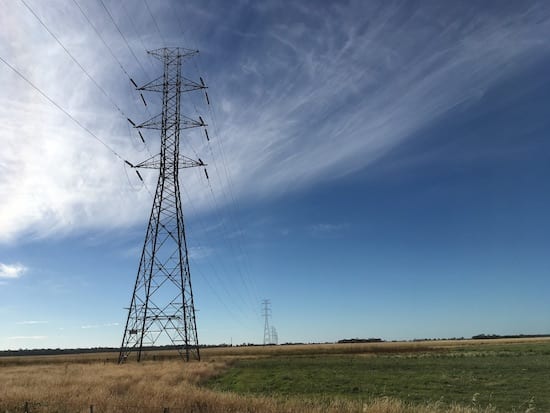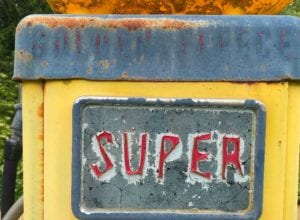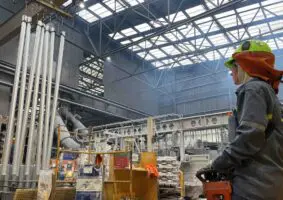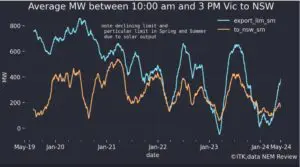Do unions in Queensland hate renewable energy as much as the hard right?
The local head of the CFMEU wants all ALP candidates to sign a “we love coal” pledge and the ETU has strong-armed the Queensland government into requiring licensed electricians on solar plants where they aren’t needed.
Or, if they are needed, I haven’t seen any reports of evidence. What happened to that foundation of good government evidence-based policy? In the absence of evidence to the contrary it’s easy to see this as the ETU making sure they clip the ticket and have enough influence in QLD to get their way.
We can also compare QLD’s seemingly half-hearted renewable energy progress, as outlined by Stephanie Jolly the assistant general manager of energy markets at Queensland’s Department of Natural Resources, Mines and Energy, at the Smart Energy Conference with that of Liberal South Australia.
I missed Jolly’s presentation but the published slides were not encouraging. Let’s look at all the Government actions as outlined on her two slides headed “Government Action”.

I’d like to be clear I’m not criticizing Jolly, who no doubt would be happy to report actions if there were any. The one interesting fact in her entire presentation is that there are 3,400 grid connected batteries in QLD and 30 per cent of houses with solar PV on the roof. 3400, that’s progress. Isn’t it?
By contrast, let’s look at the Liberal South Australian government presentation at the same conference (which I also missed). South Australia Gross State Product is just 1/3 of Queensland.


Of course, the Libs inherited much of this, but I like the way they’ve carried it on. Dan Van Holst Pellekaan (South Australia’s energy minister) is the only Liberal politician to accept an invitation to be guest on the “Energy Insiders” podcast and I thought he presented well.
No doubt it’s easier in South Australia both because there isn’t a coal lobby and, more controversially, because there isn’t a National Party presence. Also it’s true, power prices are higher in South Australia. However, the forward outlook is encouraging.
Federal election odds – The Federal Govt matters to electricity and decarbonisation
As of 21 April, Sportsbet had the ALP at $1.18 and Coalition at $4.75 to form the next government.
The Coalition was at $4.50 as recently as Friday, indicating that in punters’ minds and wallets may have weakened since then. These correspond to punters estimating an 80 per cent probability of an ALP government in the House of Reps with between 82-90 seats the shortest odds (out of 150).
We went through ALP policy previously in detail. We think that $10 billion to the CEFC ($2 billion per year) and $5 billion to the new Infrastructure Fund will drive lots of investment.
We think it’s unclear whether additional funds to the CEFC of this magnitude require specific legislation, as opposed to, say, going through the budget. Even if separate legislation was required I’d have thought there was a pretty clear mandate, as it’s announced policy…….
The market action
This is, seasonally, the weakest time of the year and also there is still plenty of solar in Queensland so prices might be soft, and they are at times.
However, there have also been considerable outages at various coal generators with the result that, on average, prices were well up on the same week last year even though volumes were down.
Right now coal outages push prices up a lot and thermal generators probably don’t mind about the outages too much. However, as new generation continues to come on line and the outages become more enforced there may be more thinking about prices.
Gas prices in the trading market remain well above last year and REC prices were soft, although no softer. One big issue for financiers of new renewable energy projects will be the prospect of getting some credit in the broader emissions reduction market.

Coal prices recovered a bit and it’s hard to sort out underlying fundamentals from the international politics. Very regrettably, and presumably not for too long, China is still growing its thermal electricity output and the coal has to come from somewhere. We maintain that China can’t afford to buy international thermal coal at current prices.
It will kill its own electricity prices. We hope to report on that once the China State-owned generators report annual results at the end of this month. Oil prices also grew and it was a nothing week in the bond market for price movement.

Volumes

Base Load Futures, $MWH

Looking at FY22 is misleading as there is no trade. One thing South Australians can be happy about is that in FY21 electricity prices there are about the same as in NSW and Victoria despite the reliance on gas. Near term futures are rising in NSW and Victoria in particular.

Gas Prices











